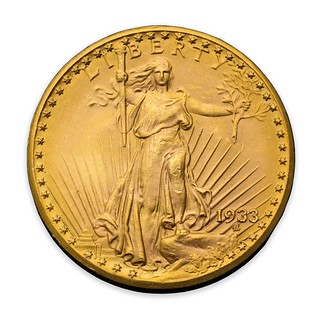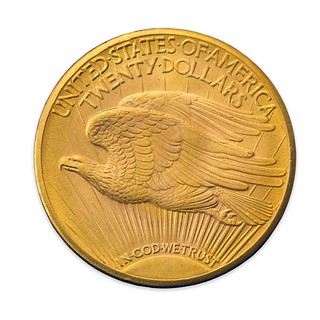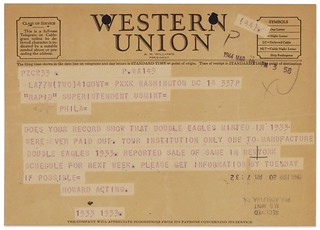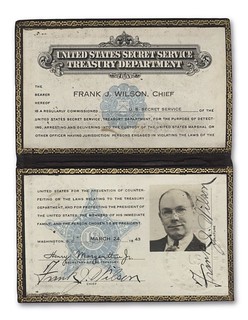
PREV ARTICLE
NEXT ARTICLE
FULL ISSUE
PREV FULL ISSUE
THE FAROUK 1933 DOUBLE EAGLE, PART 3I ran out of time to prep this article for last week's issue, but here's the next part of the story of the Farouk 1933 Double Eagle, courtesy Sotheby's. Thanks! -Editor A REMARKABLE CASCADE OF COINCIDENCE(?) After two and a half years the great gold melt was nearing an end. By the time the task was finished, a purpose-built home for the newly made ingots had been completed: Fort Knox. On February 6, 1937, the seal was broken on Vault F, Cage 1, which included 1933 Double Eagles; when its contents were poured into the crucibles and rendered into gold bar, the books on the last gold coins produced by the United States were officially closed . . . but coincidentally(?):
ISRAEL SWITT, SWORN STATEMENT TO UNITED STATES SECRET SERVICE, MARCH 30, 1944
COIN DEALER JAMES MACALLISTER TO UNITED STATES SECRET SERVICE, REPORT, APRIL 28, 1944 (REGARDING HIS FEBRUARY 17, 1937 PURCHASE OF A 1933 DOUBLE EAGLE FROM ISRAEL SWITT)
NUMISMATIC SCRAPBOOK, APRIL, 1937, P. 75 AND THEN IT GOT INTERESTING
The Col. James W. Flanagan collection was to be sold at auction by Stack’s on March 25, 1944. Lot 1681 was highlighted:
The summary response indicated that the official record accounted for every example struck; the United States Treasurer’s office concurred, and Howard’s clipped wire to Kehr concluded: Howard took this information to the Chief of the Secret Service, Frank J. Wilson, who got things rolling: Special Agents James Haley and Harry W. Strang arrived at Stack’s the day before the auction. There, to the proprietors’ dismay, the 1933 Double Eagle was seized as being potentially stolen property. The Stacks provided the agents with the name of another owner, Max Berenstein, whose example was also seized. The next day, Strang and Haley confiscated a third example, identified the whereabouts of a fourth, and had accumulated a passel of names and leads that pointed the investigation to Philadelphia. FILE NUMBER CO-10468
Special Agents Strang and George Drescher started working Philadelphia where the investigation unfolded quickly. James G. Macallister, a highly respected coin dealer, informed them he had bought his first 1933 Double Eagle on February 17, 1937 for $500 (he resold it the next day for $1,600), and that prior to that purchase
During 1937 Macallister had purchased five 1933 Double Eagles, all from a man called Israel Switt, who gave conflicting stories as to where he had got them. But,
To read the complete lot description, see:
To read the earlier E-Sylum articles, see:
THE BOOK BAZARREWayne Homren, Editor The Numismatic Bibliomania Society is a non-profit organization promoting numismatic literature. See our web site at coinbooks.org. To submit items for publication in The E-Sylum, write to the Editor at this address: whomren@gmail.com To subscribe go to: https://my.binhost.com/lists/listinfo/esylum All Rights Reserved. NBS Home Page Contact the NBS webmaster 
|



